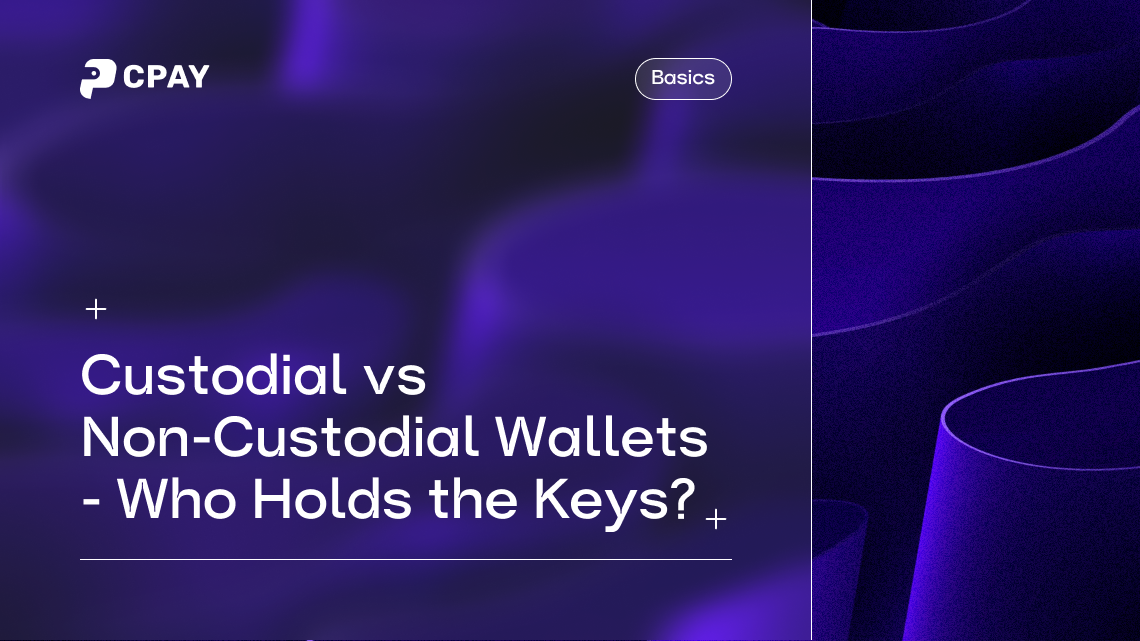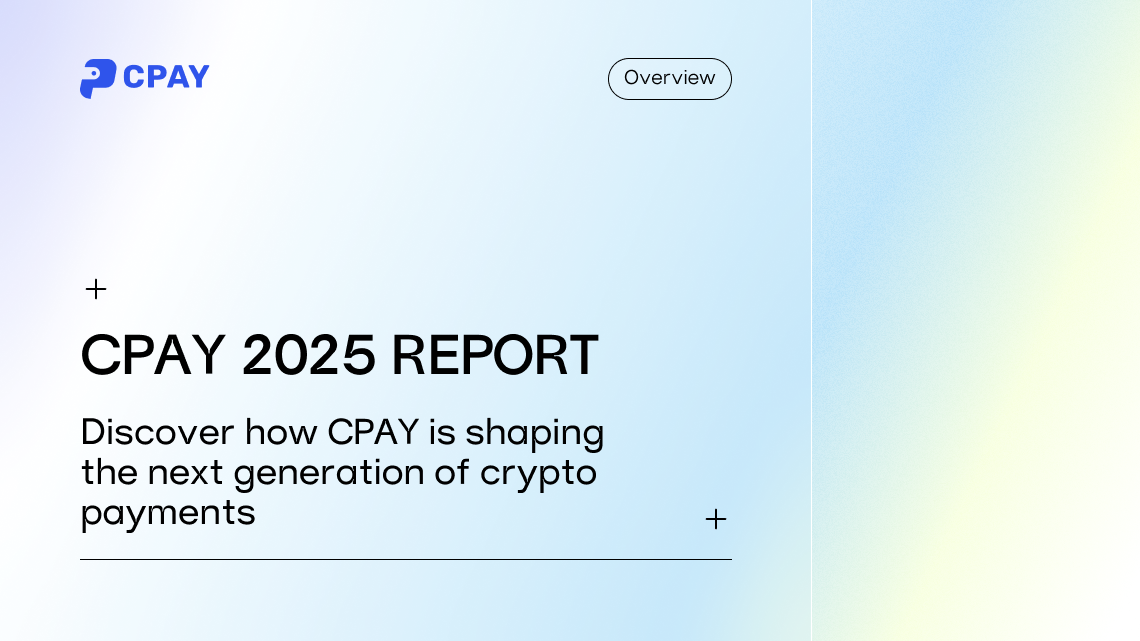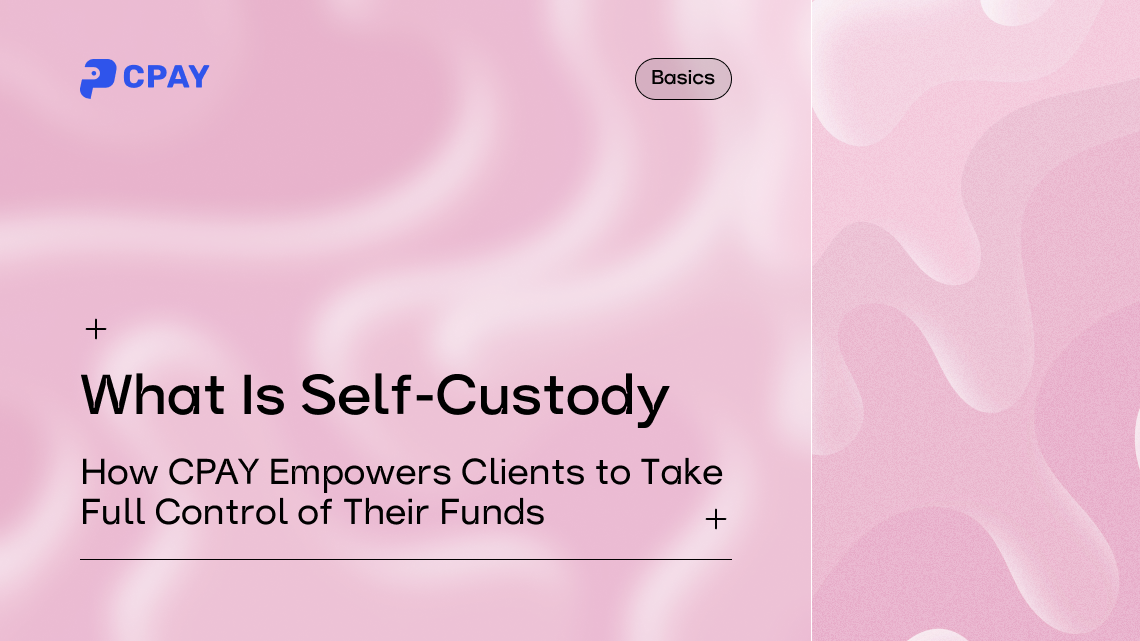Every crypto user needs a wallet. But the choice isn’t just about the interface or supported tokens - it’s about who really controls your funds. This is where the debate between custodial and non-custodial wallets comes in.
Understanding the difference is crucial for both individual investors and businesses building crypto products. Let’s break it down.
What is a Custodial Wallet?
A custodial wallet is managed by a third party. When you store your crypto on an exchange or through a payment provider, they hold your private keys on your behalf.
It’s like depositing money in a bank: the bank safeguards it, but ultimately controls the vault.
Custodial wallets are popular among beginners because they’re simple to set up and easy to recover if you forget your password. Many come with integrated services like trading, fiat on-ramps, or payment tools.
But this convenience comes with trade-offs. Because a third party manages your assets, your funds can be frozen, delayed, or even lost in the event of a hack. The collapse of Mt. Gox and FTX showed the risks of relying on centralized custody.
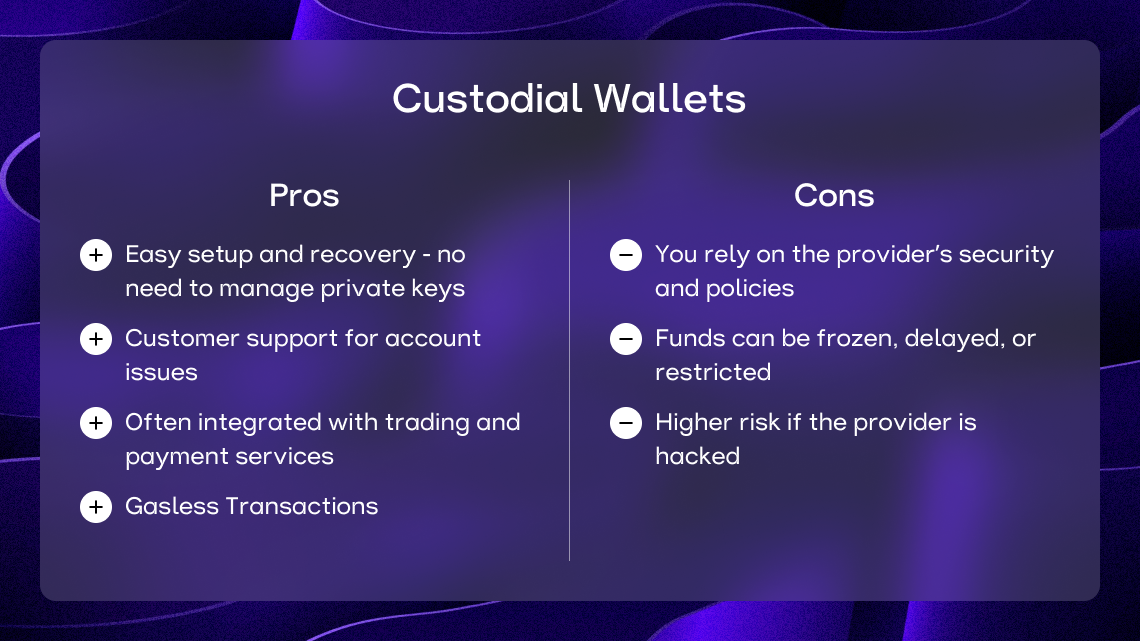
Non-Custodial Wallets
Non-custodial wallets give you full control of your funds. Here, only you hold the private keys or seed phrase. No one else can move your money or freeze your account.
This is the essence of self-sovereignty in crypto: you don’t need permission to transact.
The advantages are clear:
- True ownership — you’re in control at all times
- No restrictions — funds can’t be blocked by intermediaries
- Censorship resistance — your wallet works anywhere in the world
Of course, responsibility shifts entirely to the user. Lose your private key, and there’s no “forgot password” button to save you. That’s why many beginners find non-custodial wallets intimidating.
Yet, despite the learning curve, non-custodial adoption is growing fast. A recent survey across major wallet providers (MoonPay, Hedera, Tangem, BitPay, and others) found that over 70% of crypto users prefer non-custodial solutions because they prioritize security and independence.
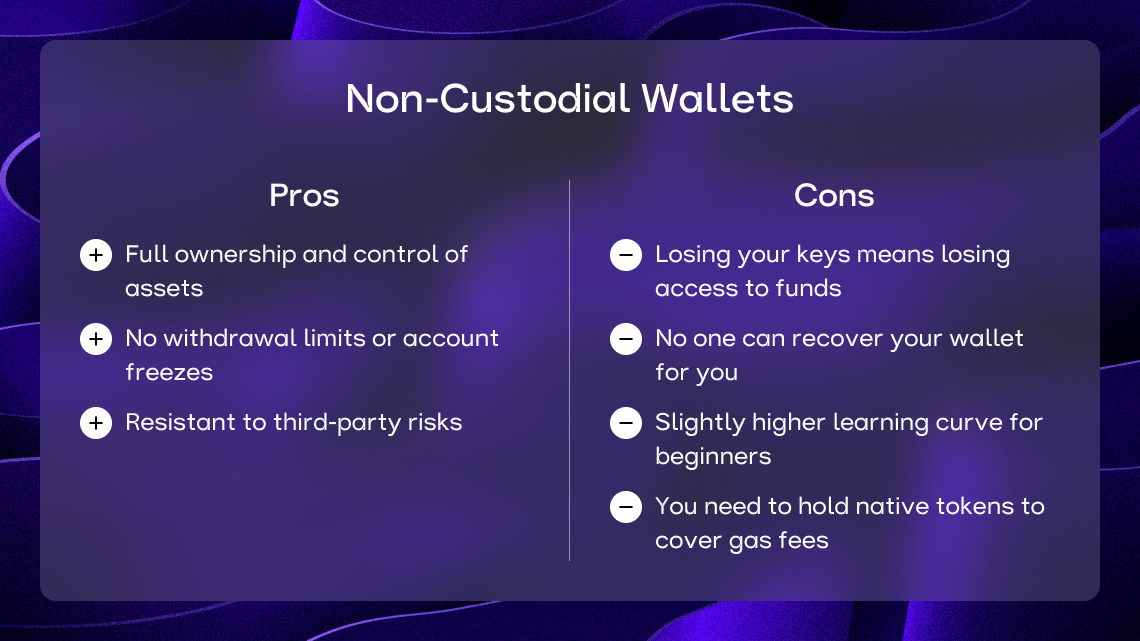
The bigger picture
The custodial vs non-custodial debate boils down to one line:
Custodial = someone else holds your keys.
Non-custodial = you hold your keys.
Custodial wallets are like a bank account -safe until the bank itself fails. Non-custodial wallets are like a personal safe - secure, but only if you don’t lose the key.
Neither model is inherently “better.” It depends on what you value more: convenience or control.
Where CPAY fits in
At CPAY, we believe the future belongs to non-custodial solutions. But we also recognize that businesses need to balance security with ease of use.
That’s why CPAY provides non-custodial wallet infrastructure for fintech, crypto, and payment companies.
Our technology includes:
- Seedless self-custody (no need to store seed phrases)
- Account Abstraction & MPC for smooth user experience
- Gas station support so users don’t worry about network fees
- Multi-chain support out of the box
- Customizable, enterprise-grade architecture
This way, businesses can launch branded wallets where users always stay in control - while enjoying the reliability and seamless UX they expect.
Conclusion
The choice between custodial and non-custodial wallets is more than technical. It’s about trust, ownership, and the very foundation of crypto finance.
Custodial wallets may be easy to use, but they require trust in an intermediary. Non-custodial wallets put responsibility in your hands - but give you true financial sovereignty.
With CPAY, companies don’t have to choose between the two extremes. They can offer their users independence, security, and simplicity - all in one infrastructure.





